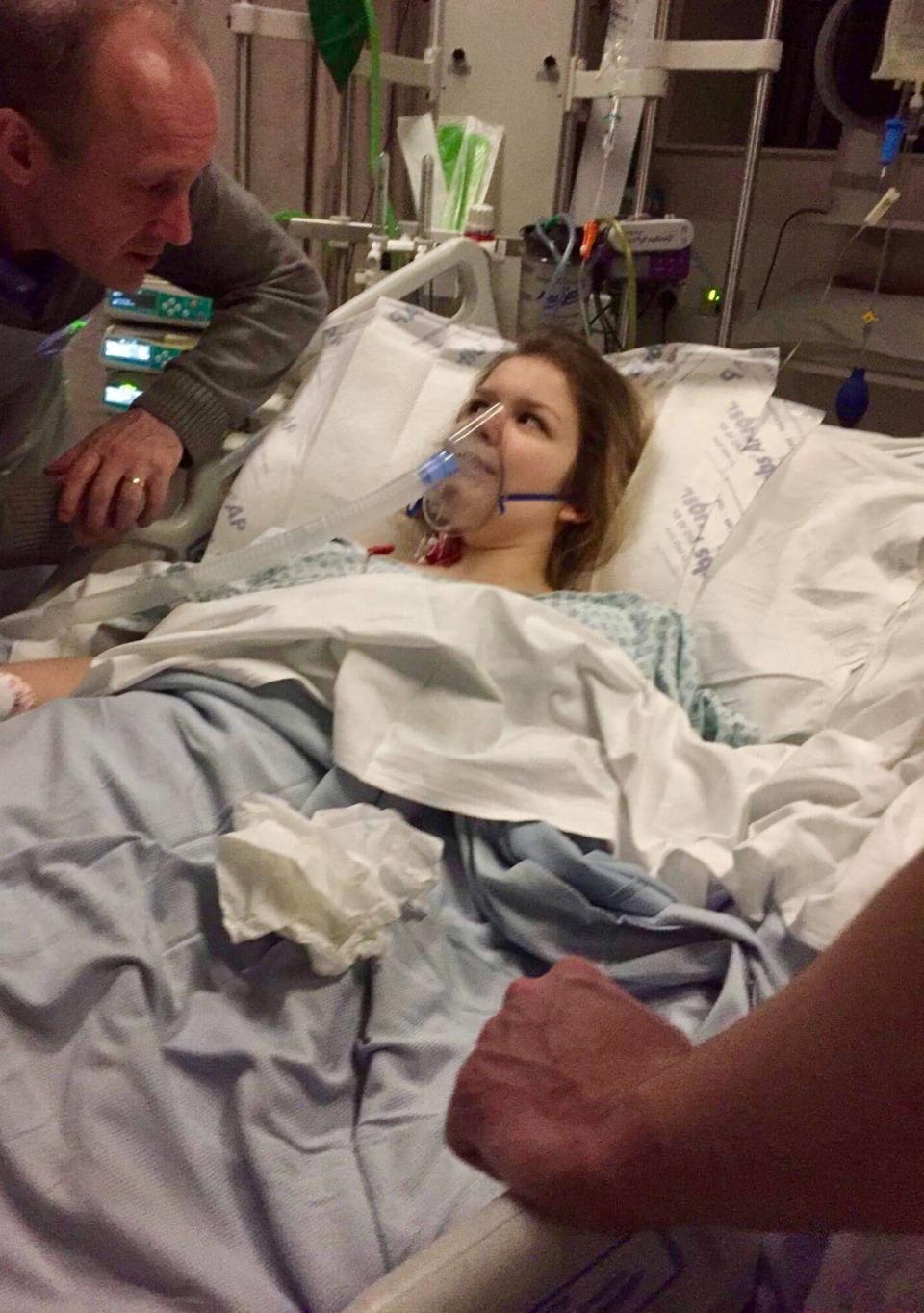What The Health?! Can taking birth control really lead to blood clots?
Can leftover spaghetti really kill you? Can you actually cough up a blood clot in the shape of your lung? In Yahoo Lifestyle Canada‘s newest series, What The Health?!, we ask doctors to weigh in on odd health news stories and set the record straight. Be sure to check back every Friday for the latest.

A 22-year-old British woman is fortunate to be alive after developing a blood clot in her lung likely due to being on the pill.
Hannah Needham’s roommate found her unconscious at home in March 2017. She was rushed to hospital, where doctors diagnosed her with a pulmonary embolism.
ALSO SEE: What The Health?! Woman's arms and legs amputated due to infection from dog saliva
Pulmonary embolism is one type of venous thromboembolism (VTE), a blood clot that forms in a deep vein. If that kind of clot breaks free from a vein wall, it can travel to the lungs and block some or all of the blood supply, a potentially life-threatening situation.

Needham had been feeling short of breath and dizzy for weeks before she eventually collapsed. In hospital, she began showing signs of heart failure. Doctors urgently administered an anti-coagulant drug.
“They put a central line into my heart, which allows anti-clotting medicine to be administered directly to the artery of the heart, so it gets around the body as quickly as possible,” Needham told the UK Mirror. “I even refused local anaesthetic when the central line was being put in because I didn't want to waste any time.
ALSO SEE: 'She was such a beautiful soul': Massachusetts mother dies after contracting mosquito-borne illness
“I think the adrenaline and my survival instinct just really kicked in,” she said.
Although the risk of acquiring a blood clot from the pill is very low, it’s still something that women need to be aware of before taking oral contraception. Needham decided to go public with her story to remind women around the world of this reality.

In 2015, she began taking what’s known as the combined oral contraceptive, which contains both estrogen and progestin. The other type of birth-control pill contains progestin only.
Sometimes she would feel dizzy and out of breath simply from climbing stairs, but Needham attribute the symptoms to stress. Upon collapsing and being admitted to hospital, she spent three days in intensive care, followed by four days in a high-care ward before going home to make a full recovery.
ALSO SEE: CDC warns of 'alarming' strain of antibiotic-resistant Salmonella: What you need to know
Looking back at her experience, Needham says she wished she had been better informed about the pros and cons of the pill.
“I was shocked a medication I felt safe taking had such a traumatic effect on me,” she said. “In retrospect, I wouldn't have started taking the pill.
“But plenty of women who take the pill get on well with it, so I wouldn’t want to completely put anyone off taking it,” Needham added. “I do, however, wish I had known more about the risk of blood clots that comes with taking the pill.”

The risk of VTE in women on combined hormonal contraception is greatest in the first months of use, according to Dr. Robert Reid, of the endocrinology division in the department of obstetrics and gynecology at Queen’s University in Kingston, Ontario.
Oral contraceptives increase the risk of a blood clot in the leg from five per 10,000 in nonusers to about nine in 10,000 users in the first six months of use, Reid says. The likelihood of a pulmonary embolus (blockage) causing death is 1 per 100 blood clots, so the additional risk of death due to pulmonary embolism in a woman who starts an oral contraceptive is about four in one million.
ALSO SEE: What The Health?! Man's dentures found in throat a week after surgery
“The risk of blood clots and pulmonary embolism are much higher in a woman who becomes pregnant,” Reid tells Yahoo Canada, pointing to studies that show that pulmonary emboli remain one of the leading causes of maternal death in developed countries. “Certain strategies can be taken to reduce the risk in oral contraceptive users such as not prescribing oral contraceptives for cigarette smokers beyond age 35.”
New combined hormonal contraceptives containing different types of estrogens than what’s currently in use also appear to have a lower risk, he says.

Other risk factors for VTE include age (with people 40 and up being at higher risk), obesity, prolonged immobility (such as during long travel), physical inactivity, cancer, surgery, and certain fractures (of the hip, pelvis, or long bones).
Family history is another. According to a 2017 study that Reid co-wrote in the Open Journal of Obstetrics and Gynecology, if VTE is present in a first-degree relative (such as a parent, sibling, or child), screening is generally warranted before someone starts oral contraception.
ALSO SEE: 'We are gutted': Couple issues warning after all three of their dogs die from toxic algae
The study’s authors noted that the most effective types of contraception that are not associated with an increased risk of blood clots are the copper intrauterine device (IUD) and the levonorgestrel intrauterine system, a flexible device placed in the uterus that releases a hormone that helps prevent pregnancy.
A progestin-secreting contraceptive implant is also extremely effective at preventing pregnancy without increasing the risk of VTE.
The progestin-only birth-control pill does not increase the risk of VTE.
“Combined hormonal contraceptives (CHCs), whether pill, patch, or vaginal ring, are known risk factors for VTE,” Reid’s study says. “Health-care professionals need to understand the range of available contraceptive options and, with the woman, need to consider the benefits and risks of each.”
Let us know what you think by commenting below and tweeting @YahooStyleCA! Follow us on Twitter and Instagram.



